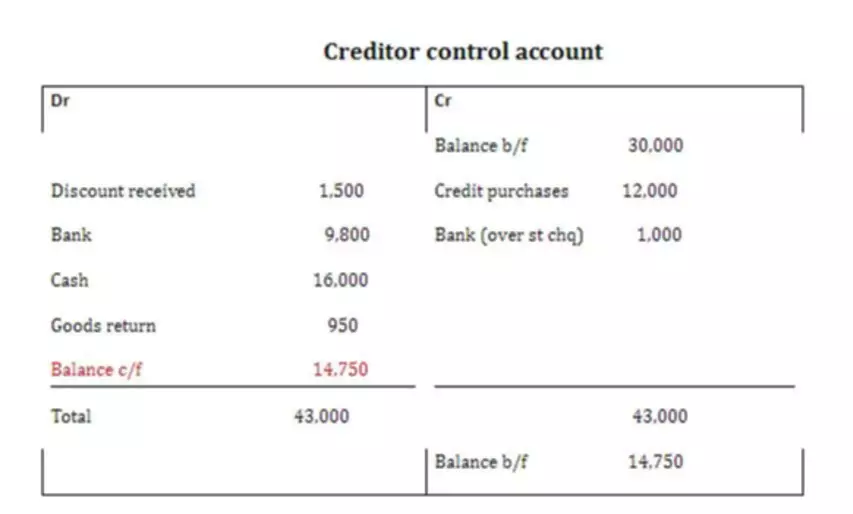Content

The statements and opinions are the expression of the author, not LegalZoom, and have not been evaluated by LegalZoom for accuracy, completeness, or changes in the law. Datarails’ FP&A solution replaces spreadsheets with real-time data and integrates fragmented workbooks and data sources into one centralized location. This allows users to work in the comfort of Microsoft Excel with the support of a much more sophisticated data management system at their disposal. The Structured Query Language comprises several different data types that allow it to store different types of information… Revenue is often the first determinant in deciding how a company performed.
- Retained earnings are the amount of net income left over for the business after it has paid out dividends to its shareholders.
- An income statement is one of the three major financial statements that report a company’s financial performance over a specific accounting period.
- Credit BalanceCredit Balance is the capital amount that a company owes to its customers & it is reflected on the right side of the General Ledger Account.
- It pays the preference dividend to preference shareholders of $75,000 and equity dividend to the equity shareholders of $100,000.
- As an important concept in accounting, the word “retained” captures the fact that because those earnings were not paid out to shareholders as dividends, they were instead retained by the company.
Revaluation surplus represents amounts credited due to the increase in the carrying value of an asset. A company’s equity reflects the value of the business, and the retained earnings balance is an important account within equity. To make informed decisions, you need to understand how activity in the income statement and the balance sheet impact retained earnings. As explained earlier, profitability generated by net income increases retained earnings, and the retained earnings balance is an equity account in the balance sheet. Now that you’ve reviewed the income statement, let’s go over the balance sheet accounts in detail. Revenue is how much money a business generates in sales and doesn’t account for other important details such as expenses, interest payments and dividend payments.
Retained Earnings Formula – How to Calculate
This increases the owner’s equity and the cash available to the business by that amount. The profit is calculated on the business’s income statement, which lists revenue or income and expenses. The results of retained earnings calculations reveal critical information about a company’s past. When companies report high retained earnings, investors will review where the company allocated its funds. A business may use retained earnings for mergers, company acquisitions, stock buybacks, loan repayment, and business expansion. Retained earnings reveal a lot of information about a business, such as its profitability, how likely it is to pay dividends to investors, and how effectively it uses its money.
Retained earnings is the residual value of a company after its expenses have been paid and dividends issued to shareholders. Retained earnings represents the amount of value a company has “saved up” each year as unspent net income. Should the company decide to have expenses exceed revenue in a future year, the company can draw down retained earnings to cover the shortage. It’s important to note that retained earnings are an accumulating balance within shareholder’s equity on the balance sheet.
It’s more than just how they’re taxed
Revenue is income, while retained earnings include the cumulative amount of net income achieved for each period net of any shareholder disbursements. Business owners use retained earnings as an indication of how they’re saving their company earnings. The goal of reinvesting retained earnings back into the business is to generate a return on that investment .

These expenses often go hand-in-hand with the manufacture and distribution of products. For example, a company may pay facilities costs for its corporate headquarters; by selling products, the company hopes to pay its facilities costs and have money left over. Though gross revenue is helpful in accounting for, it may be misleading as it does not fully encapsulate the activity regarding sale activity. For example, a company may post record-level sales; however, a major recall that resulted in 10% of all sales being returned will have material consequences on net revenue. During the same period, the total earnings per share was $13.61, while the total dividend paid out by the company was $3.38 per share. Mary Girsch-Bock is the expert on accounting software and payroll software for The Ascent. Credit BalanceCredit Balance is the capital amount that a company owes to its customers & it is reflected on the right side of the General Ledger Account.
What is net income?
Retained earnings are a key component of shareholder equity and the calculation of a company’s book value. Revenue is a measure showing demand for a company’s offerings and is calculated as the sum of all sales for a given period. Companies may choose to use their retained earnings for increasing production capacity, hiring more sales representatives, launching a new product, or share buybacks, among others. This is the final step, which will also be used as your beginning balance when calculating next year’s retained earnings. Any information obtained from Users of this Website at the time of any communication with us (the “Company”) or otherwise is stored by the Company. Any information obtained from Users of this Website at the time of any communication with us (the “Company”) or otherwise is stored by the Company.
- Ending retained earnings is at the bottom of the statement of changes to retained earnings which is only assembled after net income (the “true” bottom line) has been determined.
- Here’s how you can decide if straight line depreciation is right for your business.
- If you use accounting software to track your company’s revenues, expenses, and other transactions, the software will handle the calculation for you when it generates your financial statements.
- If this number isn’t as high as you’d like , your safest bet is to keep these profits in the business and hold off on paying out a large amount of dividends.
Companies that pay out retained earnings in the form of dividends may be attractive to investors, but paying dividends can also limit your company’s growth. That’s why many high-growth startups don’t pay dividends—they reinvest them back into growing the business. To calculate retained earnings, you retained earnings take the current retained earnings account balance, add the current period’s net income and subtract any dividends or distribution to owners or shareholders. The amount of a corporation’s retained earnings is reported as a separate line within the stockholders’ equity section of the balance sheet.
You have the choice to retain earnings, pay earnings as a cash dividend to shareholders, or a combination of both. Use this discussion to make smart decisions regarding retained earnings and the future of your business. Well-managed businesses can consistently generate operating income, and the balance is reported below gross profit. Operating income represents profit generated from Custom’s day-to-day business operations . Income statements report financial activity for a specific period of time, such as a month or year. Business owners should use a multi-step income statement to separate the cost of goods sold from operating expenses. Owner’s equity and retained earnings are largely synonymous in many circumstances, but there are key differences in exactly how they’re calculated.
Upon combining the three line items, we arrive at the end-of-period balance – for instance, Year 0’s ending balance https://quickbooks-payroll.org/ is $240m. We’ll now move to a modeling exercise, which you can access by filling out the form below.
Management and Retained Earnings
Some of the profits or losses may be carried forward to the next year as Reserve and Surplus to meet contingencies. We provide third-party links as a convenience and for informational purposes only. Intuit does not endorse or approve these products and services, or the opinions of these corporations or organizations or individuals. Intuit accepts no responsibility for the accuracy, legality, or content on these sites. Par value is a dollar amount used to allocate dollars to the common stock category.

It may also elect to use retained earnings to pay off debt, rather than to pay dividends. Another possibility is that retained earnings may be held in reserve in expectation of future losses, such as from the sale of a subsidiary or the expected outcome of a lawsuit.

